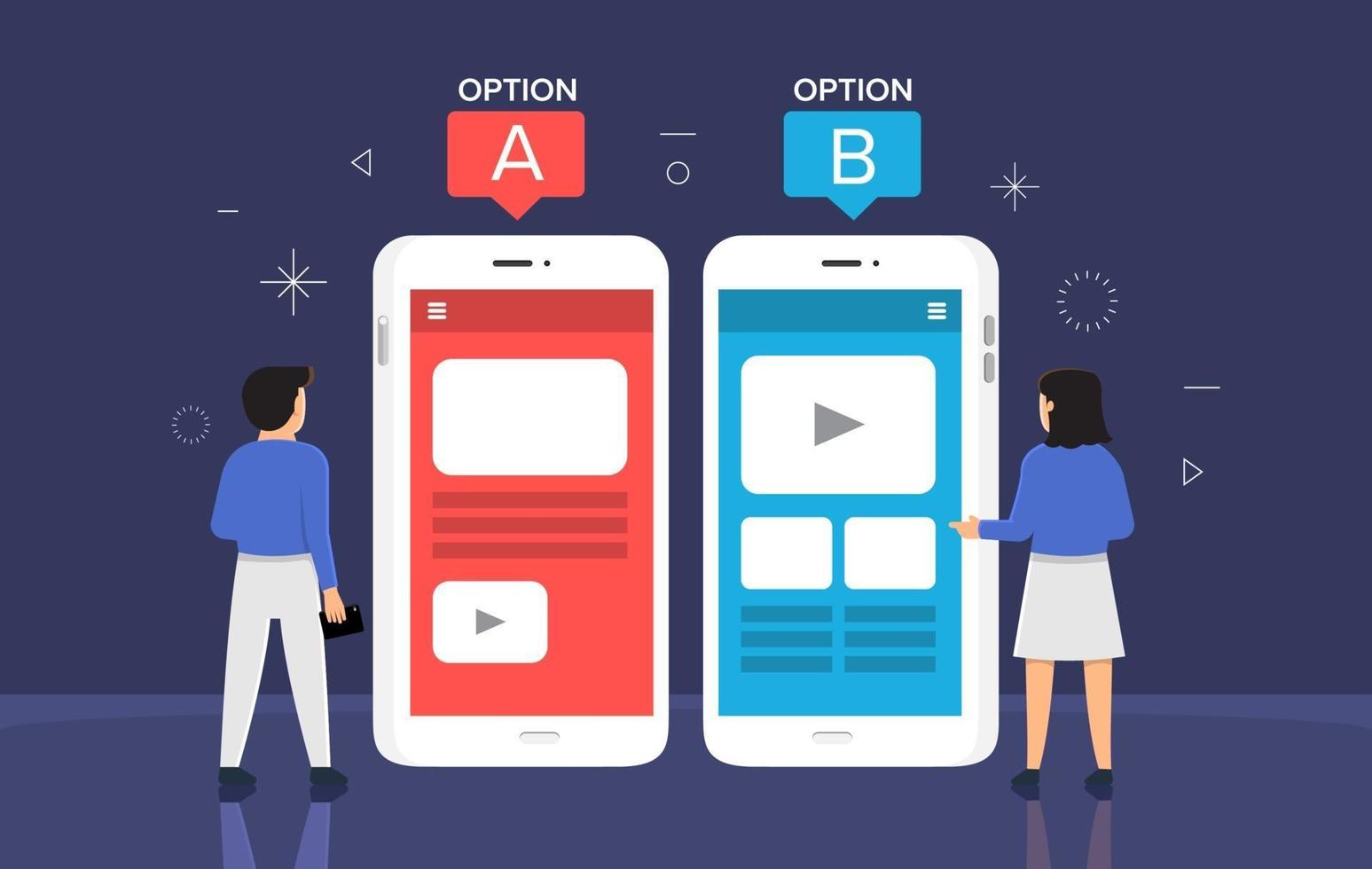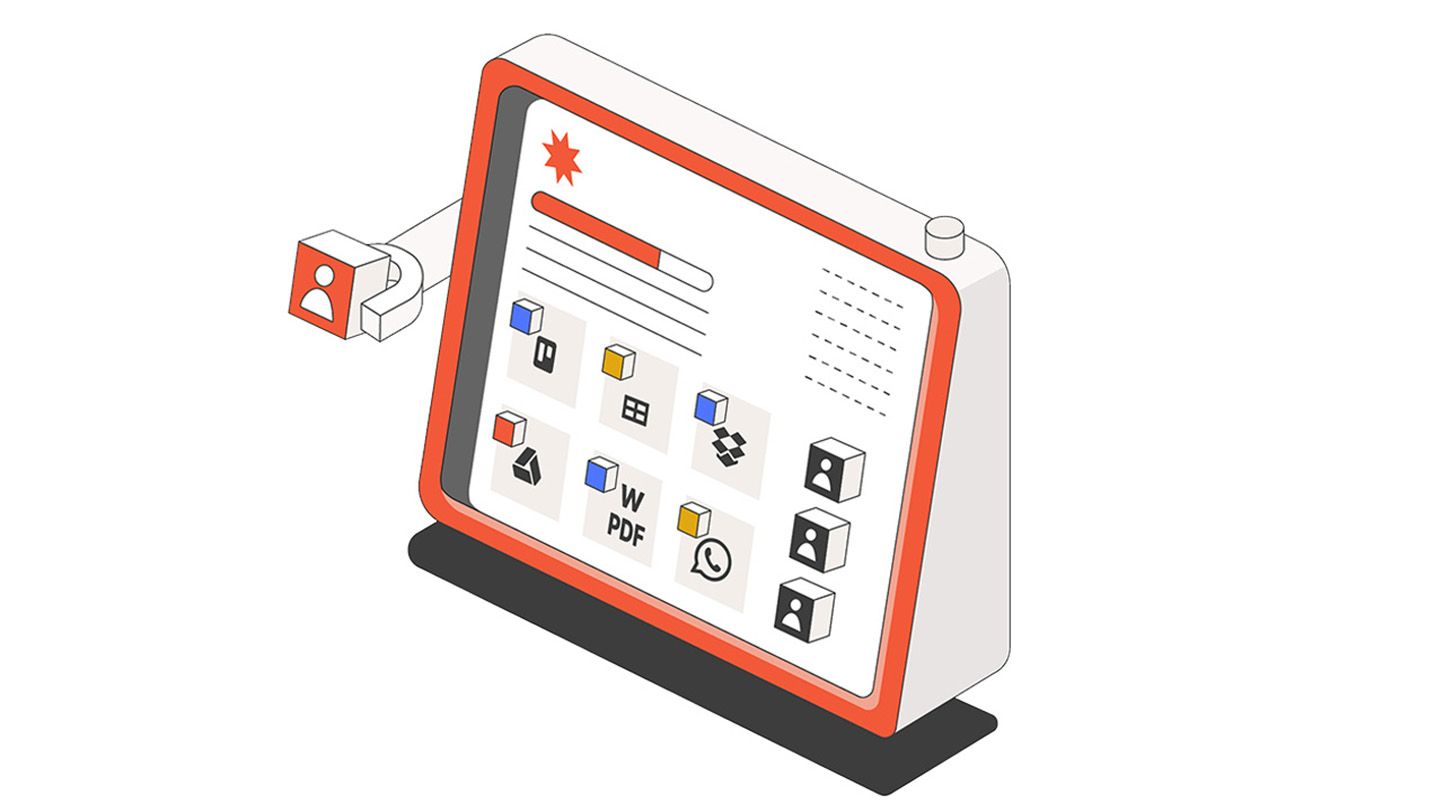Ready to ignite your sales and propel your product into the spotlight? In the ever-evolving landscape of marketing, video has emerged as a powerhouse, captivating audiences and driving conversions like never before. This ultimate guide unveils the secrets of creating compelling product marketing videos that not only showcase your offerings but forge deep connections with your target market.
Discover how strategic storytelling, captivating visuals, and targeted calls to action can transform your video content into a sales-generating machine. From explainer videos that demystify complex features to customer testimonials that build trust, we'll explore the diverse video formats that can elevate your brand and boost your bottom line. Get ready to unlock the full potential of video and witness your sales soar to new heights!
Brand Awareness and Recall with Visually Engaging Stories

Video content, particularly when infused with strong storytelling, offers a powerful way to leave a lasting impression and boost brand recall. The visual nature of video helps establish a memorable brand identity that resonates with viewers.
Design:
Use brand colors, logos, and visual elements consistently throughout your video. Employ transitions and animation styles that align with your brand personality.
Elements:
- High-quality visuals that capture attention
- A narrative structure that resonates emotionally
- Consistent use of brand elements like colors and logos
- Appealing music and sound design that enhances the story
Use Case:
A company launches a brand awareness campaign using a series of animated videos that showcase their unique company culture and mission, helping them stand out in a crowded marketplace. These video marketing efforts significantly increased brand awareness metrics over the quarter.
Drive Deeper Emotional Connections Through Storytelling

Video marketing's ability to evoke emotions surpasses traditional text-based marketing. By weaving narratives that connect with viewers on a personal level, you can forge stronger bonds and increase engagement.
Design:
Employ evocative music and sound effects. Craft visuals that elicit emotions relevant to your brand and story. Focus on character-driven narratives and relatable situations.
Elements:
- Relatable characters and storylines
- Focus on user pain points and desires
- Authentic and genuine portrayal of emotions
- High-quality visuals that evoke feelings
Use Case:
A software company produces a video that tells the story of a small business owner struggling with administrative tasks. The video demonstrates how their product alleviates these challenges, culminating in a heartfelt portrayal of the owner achieving a better work-life balance, thereby forming an emotional connection with their target audience and boosting sales of their software.
Simplify Complex Information and Increase Understanding

When you need to explain intricate features or technical aspects of your product, video serves as a highly effective tool for simplifying complex information. Visual aids make it easier for your audience to grasp key concepts quickly.
Design:
Utilize screen recordings with voiceovers to walk through functionalities. Create animated diagrams to break down complex processes. Use text overlays and graphics to highlight important points.
Elements:
- Clear and concise explanations, avoiding technical jargon
- Visual aids like diagrams, charts, and illustrations
- Step-by-step demonstrations or tutorials
- Screen recordings for software product features
Use Case:
A SaaS company creates an animated explainer video that visually demonstrates how their platform automates marketing workflows, making it easier for potential customers to understand the platform's capabilities without being overwhelmed by technical details. The straightforward explanation in the content increased lead generation significantly.
Improve Conversion Rates Through Compelling Product Demonstrations

Showing your product in action through well-crafted demonstrations can be significantly more persuasive than simply describing its features. These demonstrations allow potential customers to see the value proposition firsthand.
Design:
Focus on highlighting key features and benefits within the demonstration. Create a clear and structured format for the demo, addressing specific pain points and showcasing solutions.
Elements:
- High-quality video footage of the product in action
- Clear narration explaining functionalities and benefits
- Focus on real-world applications and problem-solving
- Screen recordings for software demos, or close-up shots for physical products
Use Case:
An e-commerce store incorporates short product demonstration videos directly onto their product pages. These videos showcase the product from various angles, demonstrate its use, and highlight its key features, directly leading to increased conversions and sales from those product pages.
Increase Website Traffic and Engagement Through Shareable Video Content
Videos are inherently shareable, especially when they offer entertaining, informative, or emotionally resonant content. Leverage this shareability to increase website traffic and bolster online presence.
Design:
Create videos designed to spark conversations and encourage social sharing. Optimize video titles, descriptions, and thumbnails to maximize visibility on social platforms.
Elements:
- Intriguing intros that capture attention immediately
- Relatable content that resonates with your target audience
- Calls to action encouraging viewers to share the video
- Optimization for various social media platforms (aspect ratios, captions)
Use Case:
A fashion brand creates a behind-the-scenes video showcasing their latest collection photoshoot. They encourage viewers to share the video with their friends using a specific hashtag, resulting in a significant increase in brand mentions and website traffic driven by video.
Generate Qualified Leads Through Targeted Video Campaigns
Use video as a tool for capturing contact information and building your email list. Offer valuable content in exchange for user information or integrate interactive features to drive lead generation.
Design:
Create gated video content accessible only after a viewer provides their contact information. Implement interactive elements within videos to prompt user engagement and data capture.
Elements:
- Lead capture forms embedded within or after the video
- Compelling calls to action offering exclusive content
- Interactive quizzes or polls embedded in the video
- Clear value proposition for providing contact information
Use Case:
A marketing automation platform offers a free webinar recording in exchange for email signups. The video webinar acts as gated content, successfully generating qualified leads interested in their marketing services.
Build Trust and Credibility with Authentic Customer Testimonials

Authentic customer testimonials provide powerful social proof that builds trust in your product and brand. Video testimonials offer a relatable and human touch that resonates with potential buyers.
Design:
Feature diverse customer voices and stories that highlight the unique benefits of your product. Ensure authenticity by focusing on genuine user experiences. Keep the visuals focused on the interviewee's narrative.
Elements:
- Real customer stories and experiences
- Genuine emotions and positive feedback
- High-quality recording to ensure clarity and professionalism
- Optional B-roll footage relevant to customer experiences
Use Case:
A skincare company uses video testimonials from real customers sharing their positive experiences and results using their product. This instills trust in potential customers and encourages them to consider purchasing the product, effectively converting video viewers into buyers.
Reach a Wider Audience Across Multiple Platforms and Devices
Video content possesses the remarkable advantage of being readily adaptable across a wide range of platforms and devices. Ensure your video can effectively reach its target audience no matter where they consume it.
Design:
Optimize video file formats and dimensions for various social media platforms and website integrations. Ensure videos are mobile-friendly and offer accessibility features like subtitles.
Elements:
- Cross-platform formatting optimization (Facebook, Instagram, YouTube)
- Mobile-friendly playback experience
- Subtitles and closed captions for wider accessibility
- Optimized file sizes for various internet connection speeds
Use Case:
A food blogger creates a cooking tutorial video. They format it for multiple platforms like YouTube, Instagram, and their own website, using different aspect ratios and captions tailored to each platform to maximize visibility and reach, thus ensuring broader dissemination of their product marketing message.
Gain a Competitive Advantage By Showcasing Unique Selling Points

Emphasize your product's key differentiators and value propositions through your video content. Use this format to highlight what sets you apart from competitors.
Design:
Visually highlight features and benefits that competitors don't offer. Directly compare your product with its rivals (when appropriate). Craft messaging that effectively emphasizes your unique strengths.
Elements:
- Clear explanations of what sets your product apart
- Visually demonstrable competitive advantages
- Focus on addressing customer pain points better than competitors
- Strong value proposition messaging
Use Case:
A productivity app company creates a video highlighting its seamless integration with other commonly used tools, a feature missing in many of their competitor's products. By showcasing this advantage, they effectively position their product as a more robust solution for their target audience, using video as a core element of their product marketing strategy.
Improve Customer Retention by Delivering Value Through Educational Video Content
Video marketing can play a vital role in customer retention. Produce valuable educational content that enhances user experience and empowers them to fully utilize your product.
Design:
Create video tutorials and how-to guides that answer common questions. Provide insightful content offering tips and tricks to improve user engagement with your product.
Elements:
- Clear step-by-step explanations
- Visual aids to help with product feature discovery
- Expert advice and insider tips related to your product
- Optimization for searchable FAQs
Use Case:
A CRM platform creates a library of tutorial videos covering different aspects of their software. They incorporate these videos within their knowledge base and help articles, enhancing the user experience by offering readily accessible guidance. This proactive approach empowers their users and fosters stronger brand loyalty.
Explainer Videos: Breaking Down Complex Features Into Easy-to-Understand Concepts
Simplify your product's message and explain how it works in a concise and visually appealing way. The objective is to make it easier for a broader audience to understand what your product offers.
Design:
Focus on delivering a clear explanation of the problem and how your product provides the solution. Employ an engaging visual style, incorporating animation or illustrations that facilitate understanding.
Elements:
- Clear definition of a specific problem your product solves
- Step-by-step breakdown of your product's solution
- Engaging visuals that complement the narration
- A concise script that avoids jargon and complexity
Use Case:
A fin-tech company uses an animated explainer video to demystify the complexities of cryptocurrency investment. By using simplified explanations and visual aids, they empower potential customers with a basic understanding and build confidence in exploring their investment platform.
Product Demo Videos: Showcasing Features and Benefits in Action to Drive Purchase Decisions
Provide potential buyers with a realistic demonstration of your product's capabilities. This lets them see its functionalities in action and envision its benefits in their own lives or businesses.
Design:
Focus on the practical applications of your product. Show how it works in real-world situations and highlight its usability. Screen recordings (for software), or close-up shots (for physical goods) are crucial here.
Elements:
- High-quality video footage of the product in use
- Clear and concise explanations of key features
- Demonstrations of specific functionalities and how they address problems
- Optional split-screen views to showcase both product use and presenter feedback
Use Case:
A mobile game developer releases a product demo video showcasing gameplay footage, demonstrating core mechanics, and highlighting addictive aspects of the game. The compelling footage entices potential players to download and try it, translating the effectiveness of the video into direct downloads and potential sales.
Testimonial Videos: Leveraging Social Proof to Build Trust and Credibility
Customer testimonials are incredibly impactful in building trust. Videos add an element of authenticity that written testimonials often lack. They allow potential buyers to connect with real users on a more human level.
Design:
Feature customers who genuinely embody your target audience and represent various demographics relevant to your product. Keep the setting and visuals relatable and visually appealing.
Elements:
- Real customer experiences and their unique results
- Emotionally engaging narratives that highlight problem-solving
- Professional video recording and editing for clear audio and visual impact
- Variety of customer profiles for broader appeal
Use Case:
A fitness company produces a series of video testimonials with clients who have successfully used their fitness program to achieve their weight loss goals. By demonstrating the effectiveness of the program through these authentic success stories, the fitness company drives engagement and conversion within its sales funnels.
Animated Explainer Videos: Engagingly Visualizing Complex Processes and Abstract Ideas

Animation can help visualize abstract concepts, products with complex functionalities, or concepts that are difficult to portray with live-action footage. They provide engaging visual tools for knowledge sharing.
Design:
Choose an animation style that aligns with your brand identity and target audience preferences. Employ motion graphics to demonstrate intricate processes, metaphorical representations to convey abstract ideas, and visual transitions to ensure viewer engagement.
Elements:
- Visually appealing and unique animation style
- Storytelling through visual metaphors and relatable characters
- Music and sound effects tailored to enhance engagement
- Clarity in communicating complex concepts
Use Case:
A cybersecurity firm uses an animated video to explain how their software protects user data from cyber attacks. Through metaphorical visual representation, the video makes this abstract topic relatable and understandable to the non-technical customer.
Behind-the-Scenes Videos: Humanizing Your Brand and Building Connections with Your Audience
Showcase your company's culture, introduce your team, and create authentic connection points with your audience by giving them a peek behind the curtain. This fosters a sense of relatability and trust.
Design:
Embrace natural and spontaneous footage rather than overly staged scenarios. Give viewers a glimpse into your daily operations or special company events. Feature employee stories that highlight your company's values.
Elements:
- Authenticity and transparency into your business culture
- Interviews with employees who showcase company personality
- A glimpse into work environments and day-to-day processes
- Footage from events, conferences, or other social occasions
Use Case:
A tech startup features a behind-the-scenes video of their team preparing for a major product launch. The video features their brainstorming sessions, team dinners, and casual office moments, fostering a genuine and human connection with their viewers.
Case Study Videos: Demonstrating Value Through Real-World Examples and Success Stories

Dive deep into how your product helped solve specific challenges faced by one of your customers. A case study video effectively communicates the value and demonstrable ROI of your offering through a detailed and tangible example.
Design:
Employ interview formats with customers discussing the problems faced and the solutions found using your product. Feature quantitative results (data visualization through charts) when possible to illustrate the positive impact.
Elements:
- Interviews with customers highlighting their unique challenges and outcomes
- Clearly presented statistics and measurable results (screen recording/graphs)
- Focus on real-world scenarios and problem-solving
- Before & after showcases of improvement after using the product
Use Case:
A marketing agency creates a case study video outlining a campaign for a particular client. It details the goals, strategies used, and measurable outcomes of the campaign, like increases in website traffic or social engagement, using these results to attract similar clients who face comparable needs.
Comparison Videos: Highlighting Key Differences and Advantages over Competitors
![]()
In certain markets or for established products, it can be highly effective to showcase your advantages directly when compared to your competition. Address customer doubts by directly showing the value proposition in a head-to-head fashion.
Design:
Use split-screens or side-by-side visuals for a clear and easy comparison. Highlight key features where your product excels, backed up with factual data or demonstrations where appropriate.
Elements:
- Side-by-side comparisons highlighting product advantages
- Clear and objective explanation of competing features
- Visual representation of performance and cost benefits
- Compliance with ethical advertising guidelines
Use Case:
A web hosting company creates a comparison video outlining the advantages of their platform in terms of bandwidth, storage, and cost, directly showcasing their strengths compared to popular alternatives in the marketplace. This type of product marketing video aims to win over customers who are already considering their competition.
FAQ Videos: Addressing Common Customer Concerns and Objections Proactively
Build trust and address recurring customer questions preemptively through short and informative videos that clarify doubts or explain crucial functionalities, particularly those relating to aspects that initially prevented potential users from engaging or buying.
Design:
Focus on answering specific questions concisely and comprehensively. Maintain a consistent structure to enhance clarity and provide readily navigable menus for users to find their required question videos.
Elements:
- Identification and focus on most commonly asked customer questions
- Use of animation, visuals, or screen recordings when explaining technical elements
- Option to display user-generated questions and video responses
- Link the video to relevant areas of your website or support resources
Use Case:
A bank offers a library of FAQ videos addressing concerns related to online banking safety and functionalities, thus enhancing customer trust and proactively mitigating any potential user issues with their sales process for digital services.
Start with a Strong Hook that Grabs Attention in the First Few Seconds

Capture the viewer's attention immediately, because they may click away otherwise. A strong hook makes them want to watch more. Your video content lives and dies by the engagement it can muster in the crucial opening seconds.
Design:
Use eye-catching visuals, start with a surprising question, present a relevant problem the viewer can identify with, or introduce your unique selling proposition boldly and early.
Elements:
- Visually compelling intros that capture the essence of the video
- Posed questions that immediately connect with the viewer's need
- Quick teasers highlighting the key takeaway of the video
- Short, impactful text overlay and graphics
Use Case:
A food delivery app begins its product marketing video with a time-lapse showcasing how much time is lost preparing dinner during a busy day. The captivating hook immediately resonates with its target audience's core challenge, demonstrating a problem that their app aims to solve.
Tell a Story that Connects Emotionally with Your Target Audience
Instead of just showcasing features, weave a narrative that highlights how your product connects with your viewers on a personal and emotional level. Storytelling allows you to leave a lasting impact on your audience.
Design:
Use a character or storyline as a metaphor for your target audience's pain points and highlight how your product provides a transformative resolution. Consider employing humor, intrigue, or relatable life moments in the story's construction.
Elements:
- Well-developed characters with relatable challenges
- Problem-solution structure focusing on fulfilling a specific customer need
- Authentic dialogue or voiceovers with emotional tone
- Subtle product placement that doesn't interrupt narrative flow
Use Case:
An online therapy platform produces a series of animated stories revolving around common anxieties. These stories effectively relate to viewers' mental health challenges. They subtly demonstrate how the platform can support individuals navigating their wellbeing, driving interest in their subscription services in a compelling yet tactful way.
Keep it Concise and Focused, Avoiding Unnecessary Information or Jargon

Value your viewer's time. Product marketing isn't about explaining every single feature - it's about delivering maximum value with minimum time spent. Concise and to-the-point videos tend to have better viewer engagement.
Design:
Clearly define the key message you want to communicate. Script the content strategically, focusing only on delivering that message. Prioritize a fast-paced editing style over long, drawn-out introductions or explanations.
Elements:
- Concise scripting, minimizing word counts to essential points
- Visually dynamic editing and transitions
- Focus on the core value proposition
- Direct messaging that clearly articulates the user benefit
Use Case:
A productivity software tool crafts its product tutorial videos in bite-sized modules under 2 minutes, addressing specific functionalities individually. Viewers can access precisely what they need to learn efficiently without enduring lengthy walkthroughs, thereby achieving high viewership completion rates.
Use High-Quality Visuals and Audio to Enhance the Viewing Experience
The production value of your video can play a big role in the impression it leaves on your viewer. Poor visuals or sound are a distraction. Investment in good equipment and professional talent can yield high returns in the form of engagement and trust building.
Design:
Employ professional-grade lighting and sound equipment (even for basic video). Prioritize sharpness, clarity, and correct white balance in the visual content. For audio, background music selection and editing can make a big difference in viewer experience.
Elements:
- High-resolution filming (4K or HD whenever possible)
- Good lighting and framing composition in every shot
- Professional sound recording and background music selection
- Option to use royalty-free music from reputable stock sites
Use Case:
A camera manufacturer produces a product demonstration video showcasing its image stabilization feature using smooth camera movements and sharp resolution footage in real-world situations, expertly highlighting the exceptional image quality achievable with the product.
Optimize for Mobile Viewing by Ensuring Text is Readable and Content is Accessible

The majority of viewers now watch video on their phones or mobile devices. Your video content needs to be easily viewable on smaller screens and tailored to their interface's visual limitations.
Design:
Use clear and large font sizes. Use text overlays strategically to avoid cluttering the screen. Incorporate visuals designed to work well on small screens, and format videos to adapt to the portrait mode popular on mobile.
Elements:
- Large font sizes in any text that appears on screen
- Simple and clean backgrounds to enhance text readability
- Focus on vertical framing whenever feasible for the format
- Quick cuts and dynamic visuals work better for mobile viewing
Use Case:
An online retailer creating video content for social media optimizes the aspect ratio for different social media platforms, ensuring the visuals are clear and that text captions are readable across various mobile device formats for maximum reach.
Add Captions or Subtitles to Improve Accessibility and Engagement
Make your videos accessible to a wider audience. Viewers who are hearing impaired, in noisy environments, or who don't understand the language being spoken will greatly benefit from captioning or subtitles.
Design:
Incorporate auto-generated captions or professional captioning services depending on your video budget. Design clear caption styles for contrast with various background scenarios featured in the video.
Elements:
- Accurate transcriptions ensuring subtitles correctly represent the spoken dialogue
- Option to manually edit captions for increased accuracy
- Clear font type, color, and shadowing for optimized reading on various backgrounds
- Translation tools can be used to create different language versions
Use Case:
An international NGO provides multi-lingual subtitle options for their awareness campaign videos using professional captioning and translation services. This enables them to effectively engage a global audience through enhanced accessibility to their video marketing materials.
Include a Clear Call to Action That Encourages Viewers to Take the Next Step
Never leave the viewer unsure of what to do next. Guide them explicitly toward the desired outcome – subscribing, buying, requesting a demo, visiting a website, or contacting a salesperson. Your videos can convert viewers to paying customers with effective CTAs.
Design:
Clearly communicate what the desired action is – use active and persuasive language. Include a compelling reason why the viewer should take this next step. Ensure CTAs are placed prominently on screen throughout the video and spoken at crucial moments.
Elements:
- Strong action verbs such as ""Get Started Now,"" ""Learn More,"" or ""Book a Demo.""
- Brief explanations highlighting the benefit of taking the desired action
- On-screen elements to highlight and emphasize CTA buttons or texts
- End screen displays summarizing information and reiterating calls to action
Use Case:
An educational website offering an online course includes end screens in their promotional videos with direct calls to action using buttons for instant enrollment in the featured course or ""free chapter previews,"" leveraging video views into qualified leads.
A/B Test Different Elements to Optimize Performance and Maximize Impact

Data-driven optimization is key for successful video marketing campaigns. By testing different versions of your video, you can understand what resonates with your target audience and iterate to create content that drives greater results.
Design:
Experiment with different thumbnail images, video titles, intros, CTAs, or even the sequence of elements within the video. Track engagement metrics of each version using video analytics data and gather audience feedback where possible.
Elements:
- Identify variables in your video to test, isolating each element.
- Set clear metrics for evaluating test versions
- Split-testing platforms for A/B testing your video variants
- Regular review of data and iteration for continued improvement
Use Case:
A company marketing a B2B SaaS solution experiments with two different versions of their introductory product demo video. One version starts with customer problem framing, while the other uses a product feature overview. Through A/B testing, they measure which format resonates better in driving higher click-through rates for their product free trial.
Promote Your Video Across Multiple Channels to Maximize Reach and Engagement
Don't limit your videos to just one platform or a single medium. Strategic product marketing video distribution ensures greater visibility and brand reach. Tailor your content and message to suit various social media, emails, and other avenues.
Design:
Identify your target audience's primary social media hangouts and platform consumption habits. Edit video versions accordingly with different formats and calls to action tailored to that specific platform. Implement budget and strategies for paid promotion where appropriate.
Elements:
- Distribution channels identification: Youtube, Instagram, LinkedIn, website blog, emails
- Adaptation of format, thumbnails, and calls to action for each channel
- Integration of your video content with broader marketing strategies
- Paid video ad strategies to promote specific high-value content
Use Case:
A language learning app creates bite-sized animated videos explaining language rules. They distribute these across their own app interface, website blog posts related to each topic, YouTube shorts targeting keyword search, and Instagram posts engaging language enthusiast communities. This multi-pronged distribution model ensures a high return on the content created.
Analyze Viewer Data to Understand Engagement and Optimize Future Content

Don't just post your videos and forget about them. Video analytics provides crucial feedback on how viewers engage with your content. Utilize data to continuously refine and optimize future video projects for higher impact.
Design:
Identify metrics for analysis including: watch time, average view duration, click-through rates on calls to action, audience demographics, geographic viewership, and playback source. Gather data from different video distribution platforms and utilize feedback tools when possible to assess engagement.
Elements:
- Track core video metrics offered by your hosting platform
- Utilization of platform-specific video analytics dashboards
- A/B testing variations for different elements and evaluating data
- Implementation of changes based on analysis for optimized future videos
Use Case:
An e-commerce company monitors the viewership analytics on their product tour video. They find that many viewers abandon the video after a certain segment about a specific feature. In response, they edit this section in their new videos for better engagement, thereby using video marketing insights to enhance their offerings.
Define Your Target Audience and Understand Their Needs and Pain Points

Effective video marketing is built on knowing who you are making content for and what matters to them. Your strategy should be shaped around the viewer's wants, challenges, and the preferred methods they use for content consumption.
Design:
Utilize tools like surveys, website analytics, market research reports, or competitor analysis to gain insights into your customer persona. Conduct targeted keyword research related to their needs. Evaluate their common online platform engagement.
Elements:
- Audience persona research (demographics, preferences, lifestyle, problems)
- Identification of core challenges your product addresses for your audience
- Market analysis to inform where this audience consumes content most often
- Keyword and sentiment research relating to your product or service online
Use Case:
A software company catering to educational institutions researches their target audience (teachers, administration) thoroughly, using both public market reports and interviews with existing clients, tailoring future videos to include common technical challenges found during this investigation as focal problem-solving aspects of their solution.
Set Clear Objectives for Your Videos and Align Them with Your Overall Marketing Goals
Don't just create videos because they are trending - each video must serve a purpose in your overarching product marketing strategy. Define the primary outcomes you want to achieve, then ensure this aligns with your sales funnel and long-term business goals.
Design:
Is your aim to build brand awareness, explain a product, capture leads, or drive immediate sales? Outline specific objectives for each video produced, like an increase in YouTube views, web form signups, social shares, or demo requests after the video launch. Ensure objectives are trackable.
Elements:
- Defined video content categories – tutorial, awareness, case study, brand focused
- Metrics for goal tracking – web traffic increase, lead collection form entries
- Timeline or deadline assigned to goals if applicable
- Integration of video outcomes into larger marketing or sales goals (campaign link)
Use Case:
A gaming company plans a multi-stage campaign centered around new game release. Stage one's video strategy objective is maximum social awareness (measured by reach). Stage two will shift towards capturing beta tester signups (form submission on a specific landing page linked from the videos).
Develop a Content Calendar to Plan and Schedule Your Video Production and Distribution

Consistency in content delivery builds an audience and anticipation. Don't just upload when inspiration strikes – develop a video plan ahead of time with well-defined topics, target launch dates, promotion schedules, and budgetary allocations for different types of video.
Design:
Utilize planning tools like calendars, spreadsheets, or project management platforms to maintain clear timelines and content allocation across the year (quarterly, monthly). Align video topic releases with concurrent events, marketing activities, or product launches within your overall product marketing strategy.
Elements:
- Content themes allocated to different calendar blocks
- Assigning deadlines for pre-production, production, post-production, promotion
- Integration of launch dates with overall product launch or campaign calendars
- Budget or team resource allocation considerations in the calendar structure
Use Case:
A fitness influencer uses a content calendar to pre-plan a series of exercise tutorial videos. They ensure timely video uploads aligning with various gym-goers' seasonal workout objectives, for example, a beginner weight loss series in the new year followed by a summer tone-up video guide to create continuous viewer engagement and maintain audience anticipation.
Choose the Right Video Formats and Platforms to Reach Your Target Audience Effectively
Different viewers prefer to access their content through different methods or have particular preferences based on lifestyle factors like commute times. Understand your ideal viewer and then match the video production choices with their needs and media consumption habits.
Design:
Conduct demographic research to find which platforms your audience spends the most time on – YouTube, Instagram Reels, TikTok, Podcast audio, etc. Decide if short-form, long-form, or audio-only suits the message and distribution channels best. Optimize for both mobile viewing and desktop viewing depending on audience preference data.
Elements:
- Identification of platform focus (short-form social media or long-form YouTube)
- Selection of aspect ratios (horizontal, vertical) suited to chosen platforms
- Focus on file sizes (high res or highly compressed) appropriate for platform and accessibility
- Utilization of specific format restrictions imposed by a chosen platform (IG length limits)
Use Case:
A cooking brand targets individuals with minimal cooking time for their new line of easy meal kits. Their product marketing video strategy utilizes Instagram reels featuring sped-up cooking demonstrations using their products. The short format suits viewers with minimal time and aligns perfectly with this social media platform's viewer habits.
Allocate Budget and Resources for Video Production, Promotion, and Distribution

Video can be highly effective for marketing but requires either significant budget investment for professional creation or adequate internal resources for filming and post-production editing. Strategically estimate production needs at each planning stage to get the best results.
Design:
Break down the budget required across several categories – Equipment purchase/rental, software for editing, animation services, outsourcing filming crews, scriptwriters, voice talent, influencer marketing, and platform-specific ad budgets. Consider if any aspect can be produced in-house for cost reduction while maintaining quality standards.
Elements:
- Categorized breakdown of potential costs per video and campaign (pre, production, post)
- Assigning roles for video creation (scripting, filming, editing)
- Evaluation of outsourced service provider options if necessary (contractors, agencies)
- Prioritizing high-impact spending within constraints
Use Case:
A local artisan baker has a limited marketing budget. They decide to utilize in-house talent for all filming, script writing, and social promotion, however, allocate a significant portion for hiring a professional video editor with food photography experience to make sure the final video quality and sales potential remains high even with minimal resources.
Develop a Brand Style Guide for Your Videos to Ensure Consistency and Cohesion

As your video content library grows, it's important to have visual cohesion between them. Brand guidelines ensure your messaging, styling, and general brand ethos is consistently communicated to your viewer, reinforcing your company identity no matter where they discover your content.
Design:
Decide on core colors and brand typography that will be used throughout the intros, logos, graphics, or overlay texts in your video projects. Music selection should adhere to a particular tone that your brand resonates with. Have guidelines for narrative voiceover delivery, and establish editing style/transitions for consistency.
Elements:
- Brand colors (hex codes defined), fonts, logo usage placement
- Style guide for music selection tone or preferred soundtrack genres
- Scripting and storytelling guidelines for consistent brand voice
- Video editing techniques to apply consistently across your portfolio
Use Case:
A fitness gear company utilizes bold colors, motivational music, and active, high-energy editing transitions in their social videos. This is established within their product marketing video guidelines to maintain visual cohesion and consistent message delivery to their active lifestyle target audience.
Conclusion:
Navigating the world of product marketing videos can feel like charting unexplored territory, but with the insights and strategies we've explored, you're well-equipped to embark on this journey. Remember that successful video marketing isn't just about creating visually appealing content; it's about understanding your target audience deeply and crafting narratives that resonate with their needs and aspirations.
Think back to the importance of a strong hook that grabs attention within those crucial first few seconds, the power of emotional storytelling, and the strategic use of concise, jargon-free messaging. As you develop your video content, remember to prioritize high-quality visuals and audio that provide a seamless and enjoyable viewing experience, especially in today's mobile-first world.
Never underestimate the importance of clear and compelling calls to action that guide your viewers towards the desired outcome, whether it's visiting a landing page, requesting a demo, or making a purchase. Don't forget the invaluable role of A/B testing in refining your content and ensuring it drives maximum impact. And finally, embrace the power of multi-channel distribution, sharing your videos across social media, email campaigns, and paid advertising platforms to reach the widest possible audience.
Video product marketing isn't a one-size-fits-all endeavor. It requires ongoing analysis, optimization, and a genuine desire to connect with your viewers. By consistently tracking performance data, gathering user feedback, and adapting your strategies based on real-world insights, you can transform your product marketing videos into a powerful engine for growth. Let your creativity flow, experiment fearlessly, and watch your sales soar to new heights through the magic of video!











